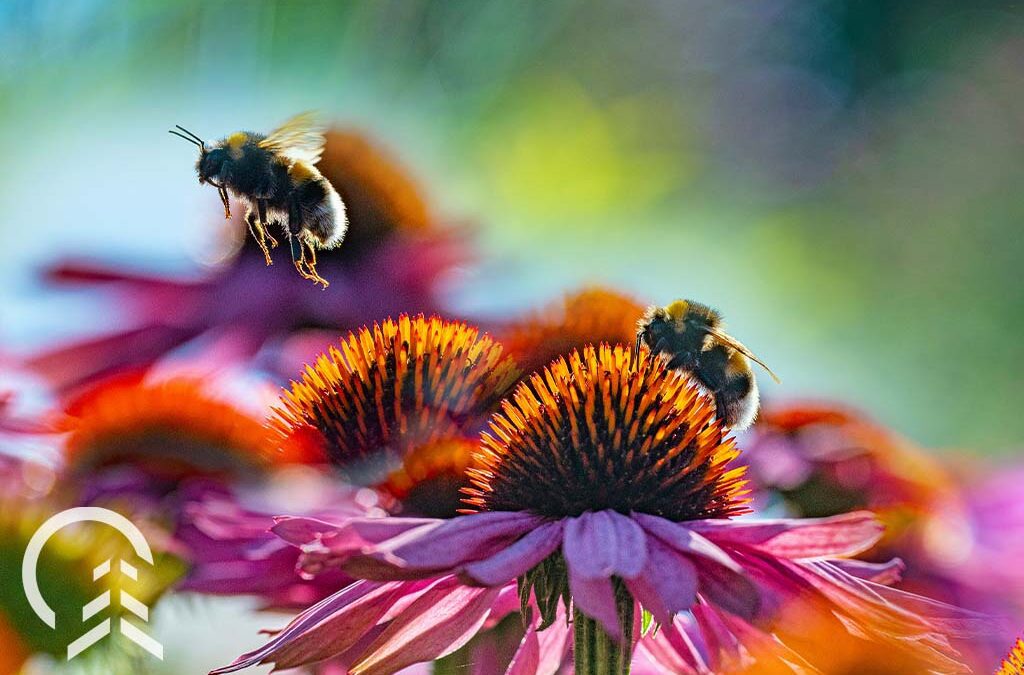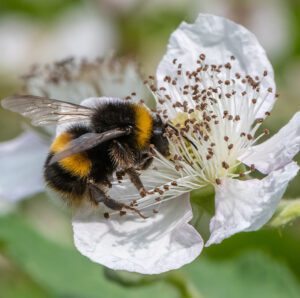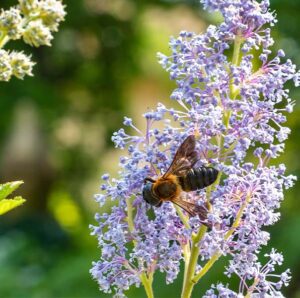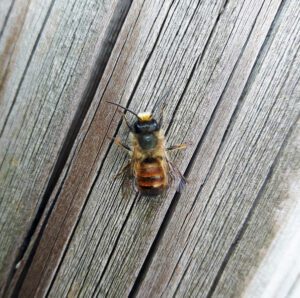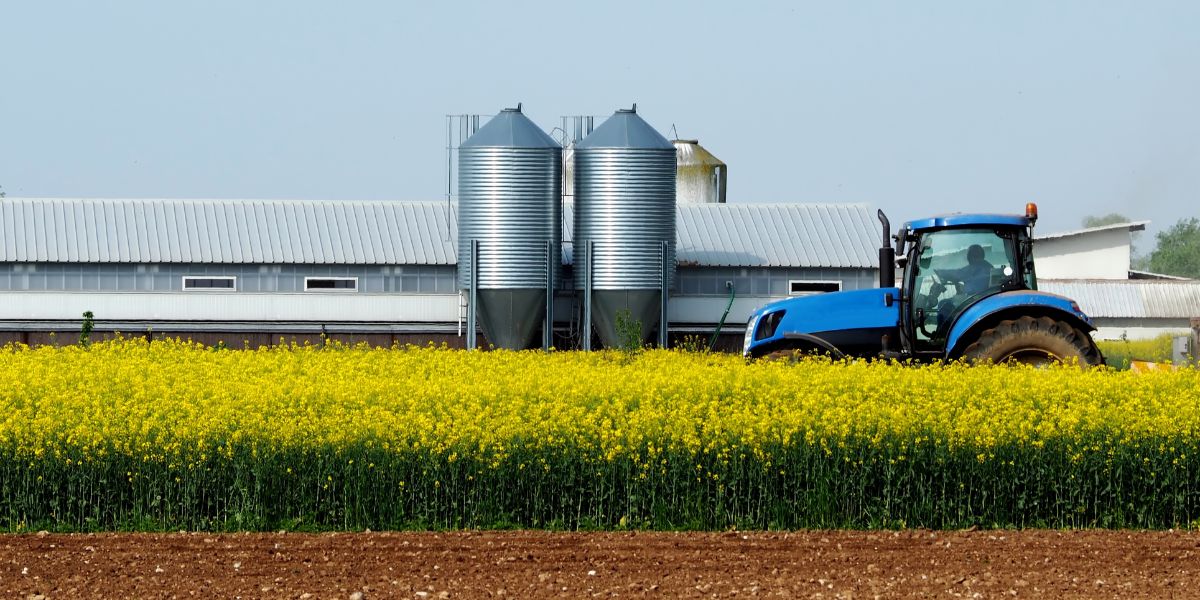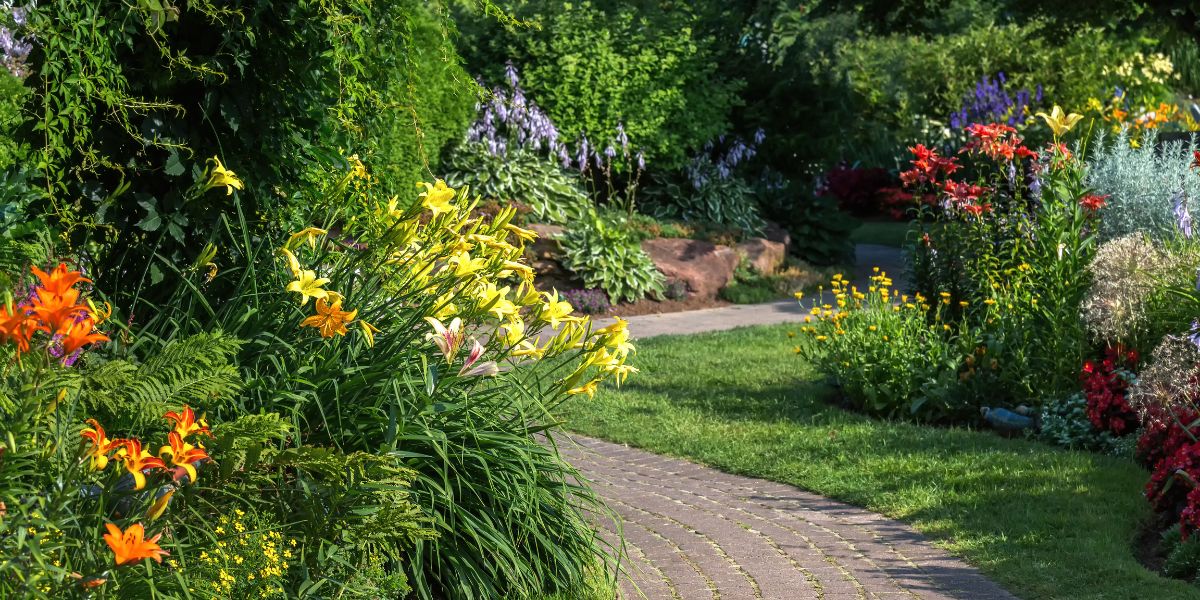Bees are getting a lot of buzz in gardening circles lately, and for good reason: essential for pollination, bees do more work for us than we sometimes realize. Learning the facts about bees can help us better understand the amazing varieties of native species that help us out and how we can help them thrive in our gardens, neighborhoods, and beyond!
Why Are Bees Important?
Look at the world of plants outside your window: every tree, shrub, and blade of grass you see started as a flower of some kind. Some of those flowers were pollinated by the wind, but the vast majority were pollinated by bees. These small buzzing insects are key to the ongoing rebirth of plant life as we know it and—as a result—are indispensable to both animals and humans like us, who depend upon plants for food, shelter, medicine, and clothing.
Knowing this, we owe bees a lot more respect, and considering that our native bee populations are in a steep decline, we would be wise to do more to protect, restore, and celebrate these humble creatures!
What Kinds of Bees are Native to Illinois?
When most people see a bee, they usually identify it as such without much of a second thought; few realize there are over 4000 different bee species living across North America, with 500 such species living in Illinois alone! Here are a few common species you’ll likely find in your garden this summer, along with some of their unique traits to help you better identify, understand, and accommodate them in your landscape:
Bumble Bees
Perhaps the most well-known of all the bee species, you’ll likely find bumble bees pollinating your garden this summer. Marked by their bushy hair, they were originally called “humble bees” because of their trademark humming sound. They live in hives of 50-400 individuals and typically build their homes in old rodents’ nests. In the fall, everyone in the hive dies off except for the mated queen, who hibernates in loose soil over the winter and establishes a new colony the following spring.
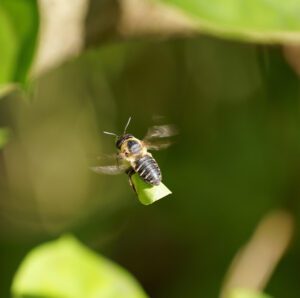
Leafcutter Bees
These solitary Chicago natives are known for lining their nests with pieces of leaves and flowers. They are active throughout the summer months and hibernate in pre-existing holes in wood or plants. In comparison to the bumble bee, they have short hair on their backs and a relatively smooth abdomen with gray-yellow bands.
Eastern Carpenter Bees
The Eastern Carpenter is another solitary native bee species that’s about the same size as a bumble bee but with a bare, black abdomen. The male and females mate in the spring. Afterward, the females dig narrow tunnels into trees or wooden siding, where they lay their eggs. These eggs hatch in the summer, giving birth to a new generation of bees that then hibernates in their hole over the winter.
Mason Bees
Another common native bee species you’ll find in your garden this summer is the mason bee. Mason bees nest in pre-existing cavities they find in plant material, using mud to reinforce their nesting holes. They’re active from spring into the early summer and are important pollinators for fruit trees and other crops. Mason bees are smaller than other species, with short yellow hair, black bodies, and few other markings.
Other Native Pollinators
Of course, these bees are just a few of the many native species that inhabit a healthy garden and only a small fraction of the pollinators that call Illinois home. Keep in mind that, besides bees, many other insects also play a role in pollination, including hoverflies, moths, butterflies, beetles, wasps, mosquitoes, ants, and hummingbirds.
What Are Honey Bees?
In contrast to native bee species, honey bees are a domesticated breed that humans have cultivated for honey since ancient times. They live in big hives and are used extensively in agriculture for pollinating crops.
Contrary to what some people think, keeping honey bees in your yard will not help restore declining bee populations. In fact, honey bees actually outcompete native bees for food sources, so if you plan to have a honey bee hive in your yard, make sure you plant extra flowers for them to eat.
Why Are Bee Populations Declining?
Native bee populations have been declining significantly in North America over the last century. Ultimately, this is a complex issue with many causes; however, the most significant is habitat loss. When we turn ancient ecosystems into farms, suburbs, and cities, we lose the native wildflowers, shrubs, trees, and even the delicate beauty of Hydrangea flowers that once supported our native bee populations.
These new agricultural and suburban areas make it difficult for bees to find food sources. A blooming canola field, for example, offers lots of nectar but only blooms for a short period of time, limiting food availability. Plus, both suburbs and farms have limited plant diversity, which can also devastate native bee populations. Many bee species have co-evolved alongside specific flowers, with their mouths and tongues specializing over time to fit their particular shapes. When these flower species aren’t available, the bee species that depend on them lose their only food source and quickly die out.
Thankfully, there are things we can do: conserving and restoring ecosystems, practicing regenerative farming techniques, incorporating ecological design practices into urban spaces, and creating bee corridors through agricultural land can all help restore bee populations.
How to Cultivate a Bee Habitat in Your Chicago Garden
On a smaller scale, we can also help out our fuzzy pollinator friends by cultivating a native bee habitat right in our backyard. Here are a few tips to help you get started:
- Grow lots of flowering plants, especially native ones.
- Grow many different kinds of flowers with different bloom times and flower shapes.
- Strive to have flowers blooming throughout the entire growing season.
- Create overwintering habitats for bees in your yard by leaving leaf litter, dead plant stalks, and brush piles in your garden.
- Wait until after the bees emerge in the spring to clean up your yard.
- Go organic to ensure your fertilizers, pesticides, and other landscape products aren’t accidentally harming your bees.
- Mix flowering plants into your vegetable garden to increase pollination.
For more facts on bee pollination, tips for making your garden more bee and pollinator friendly, or to find a few plants that your pollinators will absolutely love, come visit our garden centers in Bloomingdale and Carpentersville today!
Platt Hill Nursery is Chicago’s premier garden center and nursery.

